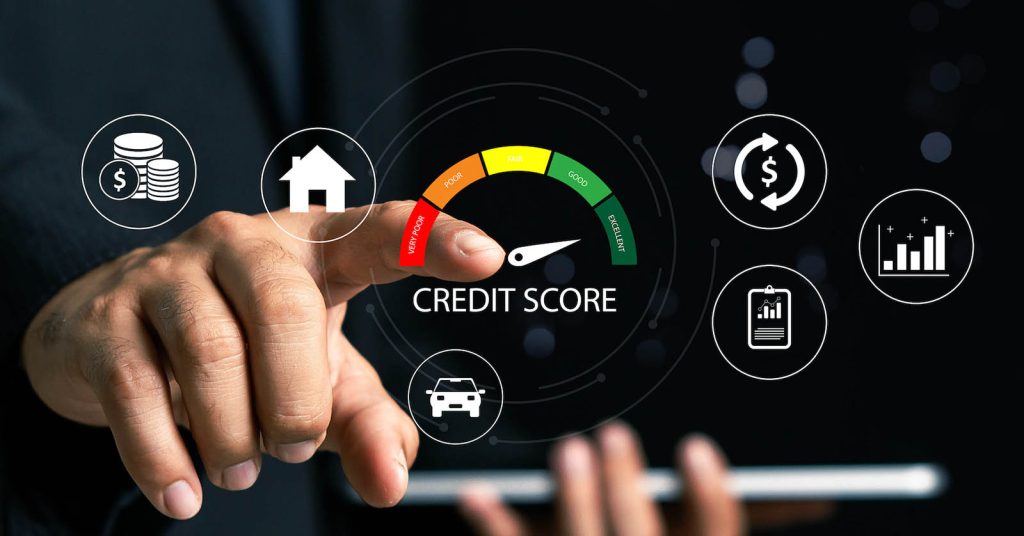When your Social Security number, card details, or personal data are exposed, acting fast can stop thieves from opening accounts in your name. Two of the most powerful tools you have are the credit freeze (also called a security freeze) and the fraud alert. They sound similar, but they work differently, come with different requirements, and fit different situations. Understanding those differences helps you lock down your credit reports without accidentally making life harder when you need legitimate credit.
This guide breaks down how each tool works in 2025, what federal rules require from the major credit bureaus, and a simple decision path to help you choose whether to freeze, flag, or do both.
Key Takeaways
- Freezes block most new-credit access at the source — they’re one of the strongest ways to stop new accounts in your name.
- Fraud alerts warn and slow down new credit — lenders must take extra steps to verify it’s really you before approving applications.
- Use a freeze after confirmed exposure or fraud — use a fraud alert if you suspect risk, want monitoring, or still need easier access to credit.
- You can combine tools strategically — many victims benefit from both a fraud alert and targeted or long-term freezes.
How a credit freeze works (and when it’s your best defense)
A credit freeze, also known as a security freeze, restricts most lenders from accessing your credit reports without your permission. If a creditor cannot see your report, they typically will not open a new line of credit — which means a freeze is highly effective at blocking many forms of new-account identity theft. Under U.S. federal law, nationwide credit freezes are free, and the major bureaus must place or lift them within specific timeframes once you properly request it.
You must place a freeze separately with each of the three nationwide credit bureaus: Equifax, Experian, and TransUnion. Once set, the freeze stays in place until you temporarily lift (“thaw”) or remove it. You can usually lift it online, by phone, or by mail for a specific creditor or a specific period. This flexibility lets you keep your file locked most of the time and briefly open it when you’re applying for a mortgage, auto loan, credit card, apartment lease, or sometimes new cell phone service.
Critically, a credit freeze does not affect your existing credit accounts, your ability to use your current cards, or your credit scores. Lenders with whom you already have a relationship, as well as certain entities like debt collectors, some government agencies, or identity monitoring services you authorize, may still access your file as permitted by law — the freeze is primarily about blocking new-credit inquiries from unfamiliar lenders.
A freeze is especially appropriate when:
- You know your data has been exposed in a breach involving sensitive identifiers (SSN, full DOB, account numbers).
- You see hard inquiries or new accounts on your credit reports that you did not authorize.
- You want a “default locked” posture and you only apply for new credit occasionally.
Because freezes are free and reversible, many regulators and consumer advocates now treat them as a baseline protection tool, not just a last resort. If you rarely open new accounts, a long-term freeze is often a low-friction way to get serious protection with minimal downside.
What a fraud alert does differently (and why it’s easier but lighter)
A fraud alert is a flag on your credit file that tells potential lenders: “Take extra steps to verify this person’s identity before opening new credit.” Rather than blocking access altogether, it requires creditors to confirm it is really you — for example, by calling a verified phone number or requesting additional documentation — before approving an application.
Key advantages: fraud alerts are free, easy to set, and you only need to contact one of the three major bureaus. That bureau is then required to pass the alert along to the others, which simplifies the process for consumers. When an alert is active, it can make it harder (though not impossible) for an identity thief to open new credit quickly in your name.
As of 2025, there are three primary types of alerts under federal law and guidance:
- Initial fraud alert (sometimes called a one-year alert): for people who suspect they may be victims of identity theft or data exposure. It typically lasts one year and can be renewed.
- Extended fraud alert: for confirmed identity theft victims who provide an identity theft report (for example, an FTC IdentityTheft.gov report or police report). It can last up to seven years and gives you additional free credit report rights and other protections.
- Active duty alert: for servicemembers on active duty, typically lasting 12 months and renewable, aimed at preventing abuse of their information while they are deployed.
Unlike a freeze, a fraud alert does not automatically stop lenders from accessing your report; it instructs them to take extra care. Responsible lenders will follow these steps, but an alert is inherently a “speed bump,” not a locked gate. That makes fraud alerts well-suited if you:
- plan to apply for new credit soon and don’t want to manage frequent thaws,
- have early signs of risk (phishing attempts, mail theft, suspicious emails) but no confirmed misuse yet,
- want added verification without fully limiting access to your reports.
Credit freeze vs. fraud alert: side-by-side comparison
Choosing between a freeze and an alert (or deciding to use both) comes down to how serious the risk is, how actively you’re applying for credit, and how much friction you’re willing to accept. Use this comparison as a quick decision lens — then layer in your real-world needs.
| Feature | Credit Freeze (Security Freeze) | Fraud Alert |
|---|---|---|
| Cost | Free nationwide | Free |
| How it protects | Blocks most new-credit checks unless you unfreeze; very strong against new-account fraud. | Requires lenders to verify identity before opening new credit; slows, but may not block fraud. |
| Setup | You must contact each bureau (Equifax, Experian, TransUnion) separately. | Contact one bureau; they notify the others. |
| Duration | Until you lift or remove it. | Initial ~1 year; extended up to 7 years with ID theft report; active duty ~12 months. |
| Impact on credit score | None. Does not affect scores or existing accounts. | None. It’s a flag, not a negative mark. |
| Best for | Confirmed identity theft or major data exposure; people who rarely apply for new credit. | Suspected risk, mild red flags, or victims who still need smoother access to new credit. |
When to use one, the other, or both
Think of freezes and alerts as a toolkit, not an either-or test. The right move depends on what has happened and how much you value convenience versus maximum security.
Use a credit freeze (at all three bureaus) if:
- You confirm fraudulent accounts or hard inquiries you did not authorize.
- Your Social Security number or key identifiers were exposed in a serious breach.
- You’re not actively rate-shopping for major loans in the next few weeks.
- You prefer a “locked by default” posture and don’t mind lifting the freeze when needed.
Use a fraud alert if:
- You suspect risk (phishing, stolen mail, lost documents) but haven’t confirmed misuse.
- You want lenders to slow down and verify your identity without fully freezing access.
- You’re planning to apply for new credit soon and need smoother processing.
Use both (freeze + fraud alert + monitoring) if:
- You are a confirmed identity theft victim.
- You have repeated suspicious activity or high-value exposure that could be misused over time.
- You want the extra verification of alerts plus the hard stop of a freeze for most new credit.
In all scenarios, pair your choice with the basics: pull your credit reports, dispute inaccurate information, change compromised passwords, enable multi-factor authentication, and use the FTC’s IdentityTheft.gov or similar official resources to create a recovery plan.
Frequently Asked Questions (FAQs)
Will a credit freeze or fraud alert hurt my credit score?
No. Neither a credit freeze nor a fraud alert is treated as negative information. They do not affect your credit scores or your ability to use existing open accounts. They simply change how new-credit checks are handled.
Do I have to contact all three bureaus to set these up?
For a credit freeze, yes — you must request it separately with Equifax, Experian, and TransUnion. For a fraud alert, no — placing it with any one of the three major bureaus requires that bureau to notify the others, which then add the alert to their files as well, based on current federal rules.
Can I apply for new credit if I have a freeze or fraud alert?
With a fraud alert, you usually can apply as normal, but lenders should take extra steps to verify your identity, so be ready to respond. With a credit freeze, you generally need to temporarily lift (thaw) or partially lift your freeze before new creditors can access your report. Plan ahead for major applications like mortgages, auto loans, or new cards.
Should I use a credit lock service instead of a freeze?
“Credit locks” are similar tools often sold or bundled by bureaus or third parties, managed through apps or portals. They are not always governed by the same laws as freezes and may cost money. If you consider a lock, compare it to the legal protections, cost (free vs. paid), and controls you get with a statutory credit freeze before deciding.
What if I’m in the military or have repeated identity theft issues?
Active duty servicemembers can request an active duty alert to add extra protections while deployed. Victims with documented identity theft can request an extended fraud alert lasting up to seven years, alongside freezes and other remedies. Check current CFPB and FTC guidance or IdentityTheft.gov for up-to-date steps, since rules and processes can be refined over time.
Sources
- CFPB — How credit freezes (security freezes) work and legal requirements
- FTC — Credit freezes and fraud alerts overview and usage tips
- FTC — Identity theft guidance and recovery steps
- Experian — Fraud alert vs. credit freeze explanations and examples
- Equifax — Fraud alerts, security freezes, and credit locks comparison
- TransUnion — How to place and manage fraud alerts
- CFPB — Steps to take if you’re a victim of identity theft (including extended alerts)
- CFPB — List of consumer reporting companies and security freeze options









